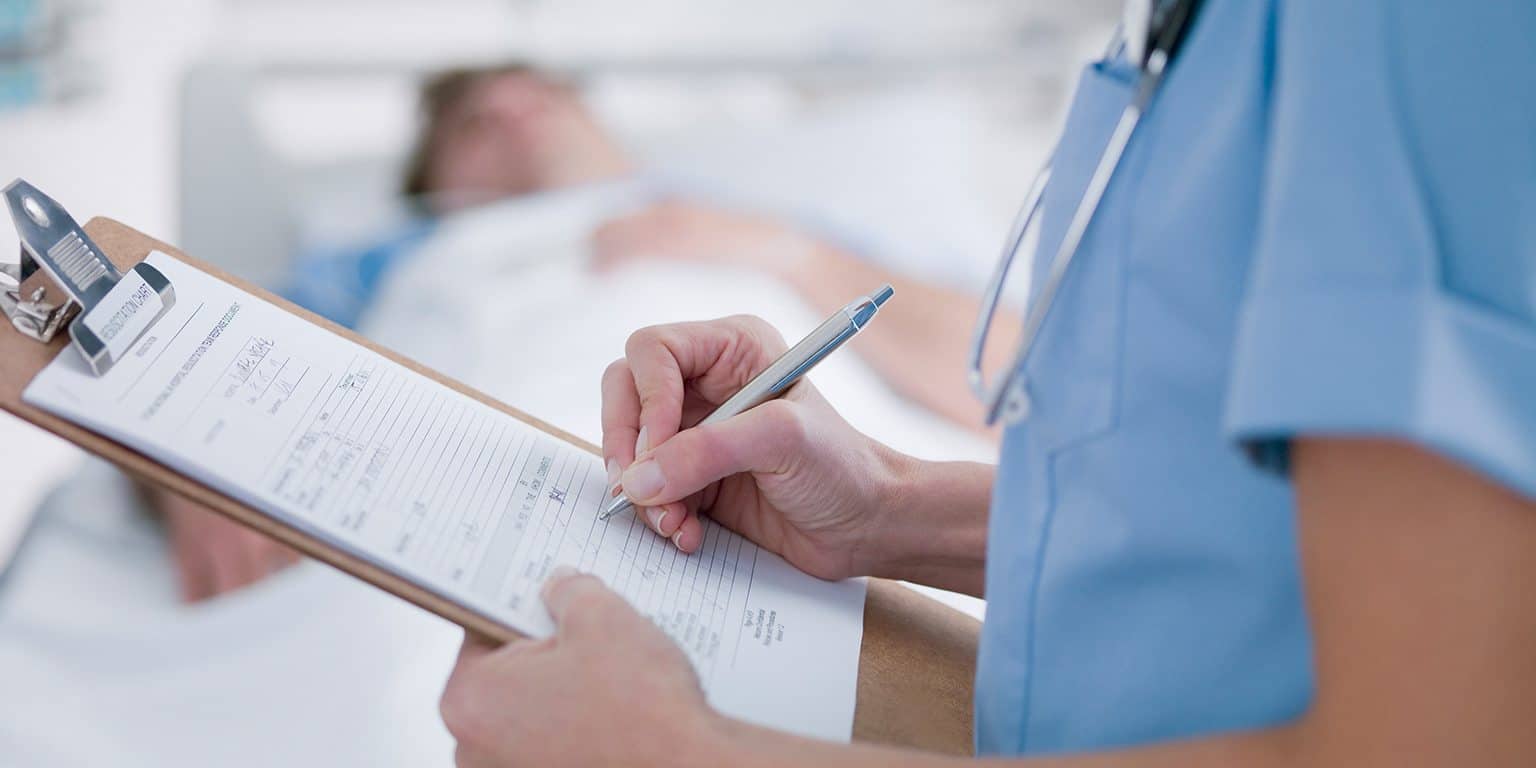Clinical documentation forms the backbone of effective healthcare delivery. For healthcare professionals, creating top-quality clinical notes isn’t merely an administrative task—it’s a critical clinical skill that directly impacts patient care, legal compliance, and practice efficiency.
At PatientNotes.Ai, we understand the challenges healthcare providers face when documenting patient encounters. That’s why we’ve created this comprehensive guide to help you craft exceptional clinical notes that serve multiple purposes while maintaining your sanity in a busy healthcare environment.
Why Exceptional Clinical Notes Matter
Clinical notes serve as the permanent record of your patient interactions and medical decision-making. They play several crucial roles:
1. Communication Tool
Clinical notes function as your primary communication channel with other healthcare providers. They convey critical information about diagnoses, treatments, and care plans to everyone involved in a patient’s care journey.
2. Legal Protection
Your clinical notes serve as legal documents that may be scrutinised if questions arise about patient care. Properly documented notes protect both you and your patients by providing a clear record of what occurred during each encounter.
3. Reimbursement Support
In today’s healthcare landscape, proper documentation directly impacts reimbursement. Well-structured clinical notes that accurately reflect the complexity of care help secure appropriate payment for services rendered.
4. Quality Improvement Resource
Clinical notes provide valuable data for quality improvement initiatives, helping identify patterns in care delivery and opportunities for enhancement.
Establishing the Right Context
Before diving into the content of your notes, establish the proper context:
- Patient Identification: Always verify you’re documenting in the correct patient record
- Temporal Details: Include precise date and time information, particularly crucial in urgent care settings
- Clear Heading: Use descriptive headers like “Initial Assessment” or “Post-Operative Follow-up”
- Provider Identification: Sign every entry with your name and professional credentials
The Anatomy of Exceptional Clinical Notes: The SOAP Structure
The SOAP framework remains the gold standard for clinical documentation in 2025, providing a logical structure that ensures comprehensive documentation.
Subjective Component
This section captures the patient’s narrative and reported symptoms:
- Document chief complaints using the patient’s own words when possible
- Include onset timing, chronology, quality, and severity of symptoms
- Note relevant psychosocial factors affecting the presentation
- Record pertinent negatives (symptoms the patient denies having)
Example of an excellent Subjective entry:
Patient reports “sharp, stabbing pain in my right lower abdomen that started about 6 hours ago and has gradually worsened.” Pain rated 7/10, exacerbated by movement, no relief with paracetamol. Denies nausea, vomiting, fever, or changes in bowel habits. Last meal was lunch at noon today.
Objective Component
The objective section includes measurable findings:
- Vital signs (temperature, blood pressure, heart rate, respiratory rate, oxygen saturation)
- Physical examination findings, organised by body system
- Laboratory results and diagnostic imaging findings
- Assessment scales or scoring tools used
Example of a thorough Objective entry:
T: 38.1°C, BP: 138/86, HR: 92, RR: 18, SpO2: 98% on room air
General: Appears uncomfortable, shifting position frequently to find comfort
Abdomen: Tenderness to palpation in right lower quadrant with guarding. Positive rebound tenderness. No distension noted. Bowel sounds present but diminished.
Labs: WBC 12.5, neutrophils predominant. CRP 28.
Assessment Component
The assessment synthesises subjective and objective information into clinical impressions:
- Primary diagnosis and differential diagnoses
- Clinical reasoning supporting your assessment
- Disease progression or improvement assessment
- Risk stratification when appropriate
Example of a clear Assessment entry:
Acute appendicitis likely based on characteristic migration of pain to RLQ, localised tenderness with rebound at McBurney’s point, elevated inflammatory markers, and fever. Alvarado score of 8 indicates high probability. Differential diagnoses include ruptured ovarian cyst (less likely given location of pain and lack of menstrual irregularities) and urinary tract infection (urinalysis normal).
Plan Component
The plan section outlines next steps:
- Diagnostic tests ordered and rationale
- Treatments initiated or modified
- Referrals made to specialists
- Patient education provided
- Follow-up arrangements
Example of a comprehensive Plan entry:
- CT abdomen/pelvis with contrast ordered to confirm diagnosis
- Surgical consultation for likely appendectomy
- NPO status in preparation for possible surgery
- IV fluids initiated at 125 mL/hr
- Antibiotic therapy started with ceftriaxone 1g IV
- Pain management with morphine 2mg IV PRN
- Patient educated about diagnosis, treatment options, and surgical risks
- Family notified with patient’s consent
Beyond SOAP: Advanced Clinical Documentation Tips
While SOAP provides the foundation, exceptional clinical notes incorporate additional elements:
1. Time Documentation
Record when significant events occur, particularly in acute care settings:
14:30 – Patient reported increased pain, morphine 2mg administered IV 14:45 – Pain reassessed, decreased from 8/10 to 4/10 15:20 – Surgical team evaluated patient, decision made to proceed with appendectomy
2. Shared Decision-Making Documentation
Document discussions regarding treatment options:
Treatment options for early-stage prostate cancer were discussed in detail, including active surveillance, radiation therapy, and radical prostatectomy. Benefits, risks, and potential side effects of each approach reviewed. Patient expressed preference for active surveillance given low-risk disease characteristics. Plan formulated collaboratively to include PSA monitoring every 3 months and repeat MRI in 6 months.
3. Uncertainty Documentation
When diagnosis remains unclear, document your approach to managing uncertainty:
Abdominal pain of uncertain aetiology. Most concerning possibilities include biliary pathology, peptic ulcer disease, and pancreatic inflammation. Management plan addresses each possibility while awaiting definitive diagnosis: abdominal ultrasound ordered to evaluate biliary system, empiric PPI therapy initiated, and lipase levels drawn to assess for pancreatic involvement.
4. Technology Integration Notes
When using decision support tools or AI assistance, document appropriately:
Risk stratification completed using ACC/AHA ASCVD calculator. 10-year risk calculated at 12.3%. Findings and recommendations discussed with patient.
Legal Considerations for Clinical Notes
Healthcare professionals must navigate various legal requirements when creating clinical notes:
Content Requirements
- Document informed consent discussions for procedures and treatments
- Record medication reconciliation efforts
- Note patient education provided and comprehension level
- Document treatment refusals and the reasoning explained to patients
Documentation Corrections
When correcting errors in clinical notes:
- Never delete or completely obscure the original entry
- Use strikethrough functionality in electronic systems
- Add correction with date, time, and signature
- Explain reason for correction when appropriate
Open Notes and Patient Access
With patients now having immediate access to clinical notes in many healthcare systems, consider:
- Writing notes with patient readership in mind
- Using supportive and respectful language
- Avoiding jargon when possible or explaining medical terms
- Including patients in the note-creation process when appropriate
PatientNotes.Ai helps clinicians create notes that meet legal requirements while remaining accessible to patients, fostering transparency and engagement in the care process.
Efficiency Strategies for Clinical Documentation
Creating exceptional clinical notes shouldn’t consume excessive time. Here are strategies to maintain quality while improving efficiency:
1. Template Utilisation
Develop customised templates for common clinical scenarios in your practice:
- Create condition-specific templates that include relevant examination components
- Design templates that guide comprehensive documentation without unnecessary elements
- Regularly update templates based on changing standards of care
2. Team-Based Documentation
Leverage your entire clinical team:
- Medical assistants can document chief complaints and vital signs
- Nursing staff can record medication administration and patient education
- Consider implementing “documentation huddles” to coordinate efforts
3. Point-of-Care Documentation
Complete as much documentation as possible during the patient encounter:
- Consider sharing your screen with patients as you document
- Narrate what you’re recording to involve patients in the process
- Use mobile documentation options when moving between examination rooms
4. Speech Recognition Technology
Modern speech recognition technology has dramatically improved:
- PatientNotes.Ai integrates advanced speech recognition specifically trained on medical terminology
- Dictation can be significantly faster than typing for many clinicians
- Voice commands can navigate templates and insert common phrases
5. AI-Assisted Documentation
AI assistants can help streamline documentation:
- PatientNotes.Ai provides AI assistance that drafts notes based on encounter audio
- AI can suggest appropriate coding based on documented elements
- Machine learning algorithms can help identify missing documentation elements
Special Considerations for Different Settings
Documentation requirements vary across healthcare settings. Here are specific considerations:
Primary Care Documentation
- Focus on preventive care measures and screening discussions
- Document chronic disease management according to evidence-based guidelines
- Include lifestyle recommendations and patient goals
Emergency Department Documentation
- Record precise timestamps for critical interventions
- Document reassessments after treatments
- Include disposition decision-making process
Inpatient Documentation
- Focus daily notes on changes from previous assessments
- Document response to interventions
- Include estimated length of stay and discharge planning elements
Specialty Care Documentation
- Reference referring provider questions and concerns
- Document communication back to primary care
- Include specialty-specific risk assessments
Clinical Notes Across the Patient Journey
Exceptional clinical notes adapt to different points in the patient journey:
Initial Encounter Notes
- Comprehensive history taking
- Establishing baseline status
- Setting treatment goals collaboratively
Follow-up Visit Notes
- Progress toward treatment goals
- Response to interventions
- Adjustments to care plans
Transition of Care Notes
- Key information for receiving providers
- Medication reconciliation details
- Outstanding issues requiring follow-up
Discharge Documentation
- Condition at discharge compared to admission
- Follow-up arrangements
- Warning signs requiring urgent attention
Measuring Documentation Quality
How do you know if your clinical notes meet the highest standards? Consider these quality metrics:
Completeness
Do your notes include all essential elements for the visit type?
Accuracy
Are your notes free from factual errors and inconsistencies?
Clarity
Would another provider easily understand your reasoning and plan?
Timeliness
Are notes completed promptly after patient encounters?
Relevance
Do notes focus on information that impacts clinical decision-making?
PatientNotes.Ai provides built-in quality assessment tools that evaluate documentation against these criteria, offering real-time feedback to improve note quality.
Common Documentation Pitfalls to Avoid
Even experienced clinicians can fall into documentation traps:
Copy-Forward Errors
Copying previous notes without adequate updating can perpetuate outdated information. Always review copied content carefully.
Inconsistencies Within Notes
Ensure that assessment and plan align with documented findings. Contradictions raise questions about thoroughness.
Inadequate Reasoning Documentation
Document your clinical reasoning process, not just conclusions. This helps others understand your thought process and provides better legal protection.
Excessive Use of Unspecified Codes
When possible, use specific diagnostic codes rather than “unspecified” options. This improves care coordination and appropriate reimbursement.
Template Bloat
Avoid including irrelevant template sections that don’t apply to the specific patient encounter.
The Future of Clinical Documentation
As we move forward in 2025, several trends are reshaping clinical documentation:
Ambient Clinical Intelligence
Systems that passively capture clinical conversations and generate documentation are becoming more sophisticated and accessible.
Patient-Contributed Data
Integration of patient-reported outcomes and home monitoring into clinical notes provides richer context for clinical decision-making.
Cross-Platform Integration
Notes that seamlessly integrate across different care settings reduce fragmentation and improve coordination.
PatientNotes.Ai remains at the forefront of these innovations, helping clinicians adapt to evolving documentation needs while maintaining focus on patient care.
Clinical Documentation Education and Training
Developing exceptional documentation skills requires ongoing education:
Formal Training Programs
Many institutions now offer dedicated training in clinical documentation improvement.
Peer Review Systems
Structured peer feedback helps identify documentation strengths and opportunities for improvement.
Quality Improvement Initiatives
Focused projects can address specific documentation challenges within practices or organisations.
Frequently Asked Questions About Clinical Notes
What are the essential components of a good clinical note?
Good clinical notes should include patient identification, date and time, a clear subjective section capturing the patient’s story, objective findings from examination and tests, a thoughtful assessment synthesizing information into clinical impressions, and a comprehensive plan outlining next steps. Documentation should be clear, concise, and timely while providing sufficient detail for other providers to understand your clinical reasoning.
How can I make my clinical notes more efficient without sacrificing quality?
To improve efficiency while maintaining quality, consider implementing customized templates for common scenarios, utilizing speech recognition technology, documenting at the point of care when possible, leveraging team-based documentation approaches, and exploring AI-assisted documentation tools like PatientNotes.Ai. Focus on documenting clinically relevant information rather than excessive detail that doesn’t impact care decisions.
How should I handle documentation corrections in electronic health records?
When correcting errors in electronic health records, never delete or completely obscure the original entry. Instead, use the system’s amendment or correction functionality, which typically applies a strikethrough to incorrect information while preserving its visibility. Add the correction with a date, time, and signature, and briefly explain the reason for the correction when appropriate. This approach maintains the integrity of the medical record while ensuring accuracy.
What should I consider when writing notes that patients will read?
With patients increasingly accessing their clinical notes, consider writing with patient readership in mind. Use respectful and supportive language, avoid medical jargon when possible or explain terms when used, directly address concerns raised by the patient, involve patients in the note-creation process when appropriate, and maintain professionalism throughout. Well-crafted notes can enhance patient engagement and understanding of their care plan.
How long should I spend on documentation for each patient encounter?
Documentation time varies based on complexity, but as a general guideline, aim to spend no more than 1-2 minutes per minute of patient contact time. For a 15-minute visit, documentation might take 15-30 minutes initially, but with practice and proper tools, this should decrease significantly. Tools like PatientNotes.Ai can reduce documentation time by up to 50% through AI assistance and optimized workflows, allowing more time for direct patient care.
Key Takeaways
- Exceptional clinical notes serve multiple purposes: They facilitate communication among providers, provide legal protection, support appropriate reimbursement, and serve as resources for quality improvement.
- The SOAP framework provides a reliable structure: Subjective information captures the patient’s story, objective data includes measurable findings, assessment synthesizes clinical impressions, and the plan outlines next steps.
- Legal considerations shape documentation requirements: Notes must meet content standards, follow proper correction procedures, and be written with patient access in mind.
- Efficiency strategies can reduce documentation burden: Templates, team-based approaches, point-of-care documentation, speech recognition, and AI assistance can all improve productivity.
- Documentation quality can be measured: Completeness, accuracy, clarity, timeliness, and relevance serve as key metrics for assessing note quality.
- PatientNotes.Ai offers comprehensive support: Our platform integrates advanced technologies to streamline documentation while maintaining the highest quality standards, allowing healthcare professionals to focus more on patient care and less on paperwork.
Creating exceptional clinical notes is both a science and an art. By following these guidelines and leveraging appropriate tools, healthcare professionals can produce documentation that truly enhances patient care while meeting all professional and legal requirements.
This article was prepared by the clinical documentation specialists at PatientNotes.Ai. For more information about how our platform can transform your documentation processes, visit our website or contact our support team.



